Expanding the kitchen at the expense of the room. Insulation of walls and ceilings. In what cases is it possible to expand the kitchen at the expense of the living room or move the “dining” room into it?
During redevelopment, many different events are carried out, some of which are quite predictable. It's about about redevelopments in standard houses, especially at home panel And brick type. Standard projects have their own characteristics associated with the designs, materials used, and, accordingly, their own prohibitions.
If you can't find accommodation through your university, or if the options available to you don't suit you, you can look for a room or apartment on the private market. In most cities in Sweden, most rental apartments are managed by central housing authorities, which operate queuing systems for so-called "first-hand" rental agreements, or negotiate contracts directly between the tenant and the property owner. Residents sign up for a queue in their city and can then apply for apartments, which are allocated based on queue time.
But this does not in any way affect the “flight of thought” of ordinary people who want to bring their personal space to mind. After all, who wouldn't want to add a few extra meters to their small kitchen?
Actions taken to remodel the kitchen
There are a number of activities that we encounter in our practice all the time and not all of them can be approved.
In large and medium-sized cities such as Stockholm, Gothenburg, Malmö, Uppsala or Lund, the waiting time for an apartment can be several years. Thus, in the private market, the most common solution for students is to search for a subclass. Through a sublease or "used" agreement, you sign an agreement to rent an apartment or room in the apartment from the current tenant. The terms of the contract depend on what you agree to with the renter, but usually cover the length of the lease, the monthly rent, and what is included in the rent.
You can enlarge the kitchen by adding areas of other rooms, for example, the area of a corridor or hallway.
They often do this: they move the kitchen to the hallway area (if it is large). If there is a living room nearby, the result is a kitchen and a dining room, visually combined into one, but only then formally does this living room cease to be a living room. This method is called a device niche kitchens and very popular.
The housing office should be able to offer general recommendations to find private housing in your city and may have information about available apartments. Many student unions also have websites that help new students find available rooms. In addition to information provided by your university, the following websites offer subscription lists.
As in all countries, it is important to be aware of scammers when searching for an apartment on the private market. Never send a payment before you have seen the apartment and signed a contract, and do not send money through anonymous payment services. Always ask for identification of the person who signed the contract, as well as proof that he or she has the authority to authorize the apartment to you. If you are unsure about the situation, you can always ask your university for help.
There are also options that cannot be formalized in any way on paper or agree upon after the fact. These are two very common options - dismantling ventilation ducts and expanding the kitchen with connecting a balcony.
Monthly rental costs vary significantly. In the private market, costs may be higher, especially in cities. If you live in private housing, be sure to find out what costs your monthly rental payments cover. In most cases, your monthly rent will cover heat and water, but depending on your contract, you may be responsible for paying for electricity, internet, or other expenses.
Improving living standards, improving health care, raising awareness of the importance healthy eating and regular physical exercise have resulted in more people enjoying life into their 80s and 90s. However, older adults, particularly frail older adults, are one of the groups in our population most vulnerable to accidents, especially in and around the home.
The first is prohibited due to the fact that any impact on ventilation affects the ventilation of the entire house and affects common property.
The connection of a balcony cannot be realized due to the fact that:
- Dismantling is prohibited window sill threshold (in some types of panel houses - due to the fact that in them it acts as a supporting structure);
- Reconstructing a balcony without creating door block according to current standards not agrees.
We are interested in increasing the kitchen area at the expense of the living room. This is a common type of repair, despite legal restrictions.
Those over 65 are at greatest risk, suffering both the highest mortality and the most severe injuries. Most accidents occur in seniors age groups ah also include women, not men. Many of the fatal and non-fatal accidents among older people are attributable in whole or in part to disabilities and poor health. This can lead to failure or slowness to see and avoid risks. Drawing the attention of older people and their caregivers to dangerous places and unsafe habits, accidents can be reduced.
Types of expanding the kitchen at the expense of the living room
If your apartment has a gas-fired kitchen, you will not be able to officially carry out the redevelopment, and even if you have already done it, you will not be able to approve it under any circumstances.
The fact is that enlarging the kitchen at the expense of the living room turns the living area into a gasified one. Placing gasified rooms (as well as wet areas, which is the kitchen) under or above the living quarters of neighbors is strictly PROHIBITED - in this way you create a potentially emergency situation.
The vast majority of fatal and non-fatal accidents involving older people fall. Nearly three-quarters of falls among the 65-year-old age group result in injuries to the arms, legs, and shoulders. Older people are also more likely to injure more than one part of their body, with 25% of falls injuring more than one part of the body, compared to 16% among all age groups. One in five falls among women aged 55 and over, resulting in a fracture or fractures requiring hospital treatment.
Other major injuries include bruising or crushing, cuts, wounds resulting from a puncture, deformation or twisting of a body part. Although most falls do not result in serious injury, being unable to rise puts you at risk for hypothermia and pressure ulcers.
When creating a connection between a gasified kitchen and a room, it is necessary to erect sliding partitions or doors with a TIGHT rebate to delimit the room.
For the reasons described, expanding an electrified kitchen into a living space is also impossible. The same prohibition applies here. When you extend your kitchen, you create a wet area above the living area below.
The most serious accidents involving older people usually occur on the stairs or in the kitchen. The bedroom and living room are the most common places for accidents in general. The largest proportion of accidents involve falls from stairs or steps, with more than 60 percent of deaths resulting from ladder accidents. Fifteen percent of falls occur in a chair or out of bed, and a similar number are caused by slipping or riding at the same level, such as falling over a rug or rug.
What accidents happen and how to prevent them?
How to get up safely after a fall
A short video clip showing how to get up after a fall. The risk of falling in the home increases with age. A significant number of falls are due to unknown reasons and when moving at the same level. This may reflect instability associated with disruption general condition health.However, there is still one option in which you can enlarge the kitchen at the expense of the living room. To do this, your apartment must be located on the first floor of the building. In this case, non-residential basement premises will be located below you.
It is also possible that you live on the second floor, and the first floor is occupied by some organization, a store, that is, also non-residential premises. Then the repair will be approved.
The cause of falls is often multifactorial due to environmental hazards and underlying medical conditions. Strengths, balance and gait, decreased vision, mental health problems and dietary deficiencies are all risk factors. Although prescription drugs are rarely a cause of falls, they can also be a major risk factor.
Falls affect more than a third of people over 65 and 40% of people older. Research has shown a wide range of fall risk factors. Medicines - analgesics, antidepressants, etc. acute and chronic diseases and disorders, including stroke and heart disease. History of previous falls.
- Physical abilities and lack of mobility, balance and gait.
- Female gender.
- Environmental hazards.
Note: all of the above cases are valid when working with NON-LOAD-LOADING partitions. If you have between the kitchen and the room load-bearing wall, it is within your ability to coordinate the creation of a doorway in. There is no other way to enlarge the kitchen at the expense of the living room.
Ninety percent of hip fractures occur among people aged 50 years and older. Hip fracture is a leading cause of morbidity and mortality. This can lead to medical complications, infections, blood clots in the leg, and an inability to regain mobility.
Avoid leaving objects on the stairs - they can become a tripping hazard. Try to avoid repeating carpet patterns, which can cause a false impression for people with poor vision. Landings, staircases and corridors should be well lit with two-way lighting switches. Make sure the railings are strong. Installing two light load rails provides greater stability.
- Make sure ladders are carefully preserved.
- Damaged or worn carpet should be repaired or removed.
You can always contact us for advice on redevelopment. Our highly qualified specialists will be happy to help you. You will find our company data in the section " Contacts».
It’s not difficult, because most of our apartments do not have sufficient area of these premises.
The film contains advice on fall prevention and features the real-life experiences of older people living in the London boroughs of Hackney, Islington and Newham. Many older people who suffer from falls never fully recover from either the physical or psychological impact their injuries.
More than a quarter of falls result in hip fractures and are estimated to cost around £2 billion to treat. Falls are an important and growing public health problem in the aging population.
Having set the goal of somehow expanding the bathroom in their apartment, owners often forget that housing legislation strictly outlines the boundaries within which functional changes in the configuration of the living space can be made.
This film is available to users and professionals working with older people. Can flooring and underlayment materials reduce hip fractures in older adults. Hip fractures in older adults following falls are a leading cause of morbidity and mortality. They can lead to complications, infections, blood clots in the legs, and an inability to regain mobility. Hip fractures can have a serious impact on a person's life.
One suggested way to prevent hip fracture is to use improved flooring. Slippery floors and ill-fitting shoes are among the main factors contributing to more than a third of all lunges each year. Falls are so common that they are perceived as almost inevitable. Greater public awareness needs to be achieved. Professionals and caregivers can help older people maintain active life, where possible, helping them identify potential hazards and provide known sources of help.
Why expanding the bathroom at the expense of the kitchen is unacceptable
Let's consider the "classic" example of enlarging the bathroom at the expense of the kitchen, taking into account the absence of any additional conditions and factors. For example, the apartment is located on the 5th floor of a nine-story building panel house, and the neighbors below identical layout yours.
What to do if you have a fall
Loss of balance through sudden movements, for example. getting out of bed or chair too early. Slip and trip hazards created by worn carpets, slippery floors or walkways, uneven surfaces, snagging folds and objects lying around loose or poorly worn shoes. Taking rails and places to sit in the bathroom and kitchen can be an advantage if dizzying spells arise. Spills on the floor should be cleaned up immediately to prevent slipping. Don't panic - you'll probably feel a little shaken and shaken, but try to remain calm. If unharmed look at something to hold and something soft to put under your knees. Using a hard object for support and a soft object under your knees, place one foot on the floor with your knee bent in front of your body. Lay forward, putting weight on your arms and leg, until you can place your other leg next to the one on the floor. It is uncomfortable to continue to stay for any length of time and may lead to blood pressure problems. Moving the position every half hour and moving the legs helps circulation and improves comfort.
- The importance of using the right equipment for the task in hand.
- Well-fitting shoes can help with balance and stability.
- Sit down and rest for a short time.
- Try to calm down until help arrives.
- Warm up, starting with your feet and legs.
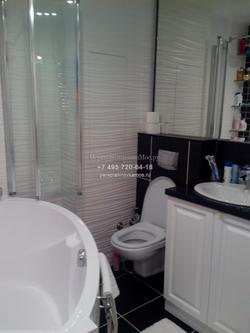
According to housing legislation, increasing the area of a bathroom or toilet at the expense of a living room or kitchen is prohibited, since in fact thisredevelopment is an extension of the “wet zone” above the above-mentioned areas of the apartment below.
Excerpt:
Clause 9.2 SP 54.133320 "Multi-apartment residential buildings" Updated version of SNiP 01/31/2003.
"It is not permitted to place a latrine or bathtub (or shower) directly above living rooms and kitchens. Placing a toilet and a bath (or shower) above the kitchen is allowed in apartments located on two levels.
Exceptions in which expanding the bathroom onto the kitchen area is possible
Option 1 : The owner's apartment is located on the first floor of a residential building. In this case, there are no obstacles in approving the redevelopment project, since there cannot be any residential premises below, and even if there is a basement under this apartment, this will not affect the approval process in any way.
Option 2
:
The floor below is completely occupied by non-residential premises.
As a rule, this applies to apartments on the second floor, either when the first floor was originally non-residential, or when the apartment on the first floor was transferred to non-residential stock for its conversion into a store, boutique, service point, etc.
IN in this case It will be necessary, in addition to the set of documents submitted for consideration, to attach some document proving that the non-residential premises are located below. There is no clear regulation on the form. This could be a reference from management company that there is a non-residential premises under your apartment on the ground floor, a BTI certificate, photographs of the facade with a clear link between your apartment and the premises ground floor etc.
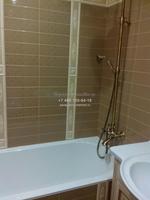
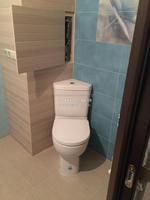

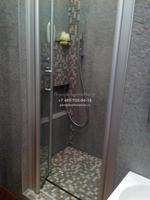
Option 3
:
Under the area of the bathroom expansion due to the kitchen there is a non-residential area of the apartment
, for example, a dressing room, pantry or corridor.
This option is possible if the owner of the apartment below has completed ( and officially agreed!
) redevelopment in favor of increasing the area of the above premises at the expense of the kitchen.
That is, in this case, we are not expanding to the kitchen area, but are expanding to the area of another room which, before the redevelopment was approved, belonged to the kitchen of the neighbors below. In this case, the BTI documents of the neighbor below must be included in the set of submitted documents.
Option 4 : Second floor of a two-level apartment. In practice, such a case is extremely rare, however, it is also an exception in which the owner has the right to enlarge the bathroom at the expense of the kitchen, even if there is a living space under the bathroom, because he worsens the living conditions only for himself.
Option 5 : If in the apartment on the floor below the bathroom has already been enlarged by part of the kitchen area. In practice, we have not encountered such a case, but theoretically it is possible. Here, again, under your neighbor’s apartment below, there must be non-residential premises, otherwise he would not be able to approve this redevelopment. And then, within the same boundaries as your neighbor’s, you can expand the bathroom at the expense of the kitchen.
This option looks something like this. Suppose there is an apartment on the ground floor and on the first floor the owner can safely increase the bath or toilet at the expense of the kitchen. He did it and agreed. Then the owner can make exactly the same expansion on the second floor, and so on. Let us also note that if any of the owners, say, on the fourth floor does not want to do such a redevelopment, then on the fifth floor the owner will no longer be able to agree on this, despite the fact that this has already been agreed upon on the first, second and third.
Mandatory requirements for enlarging the bathroom and toilet
Within the newly formed area of the bathroom, toilet or combined bathroom, waterproofing work must be carried out and a report on the hidden work carried out must be drawn up.
This type of redevelopment requires mandatory development project documentation, in some cases it may be necessary to develop a technical report on the current state load-bearing structures, this usually applies residential buildings old buildings.
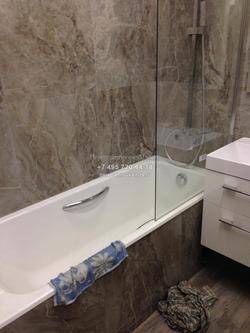

If the floors in a residential building are wooden or mixed, it is necessary to carry out additional calculations of the loads on the floors taking into account the new configuration of the apartment area. Installation of floors in a thick layer cement screed prohibited due to increased loads on the floor.
Features of expanding the bathroom into the living room
In some brick houses old building, the typical layout of an apartment practically “provokes” the owner to increase the area of the bathroom at the expense of the living room, as a result of which quite often there are cases of illegal redevelopment that cannot be agreed upon.
An example of illegal redevelopment of a bathroom with an extension into the living space:


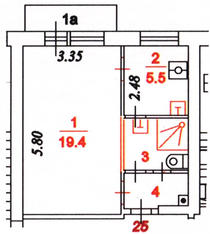 .
.
